A young maiko in her summer yukata, strolling the Hanamikoji, the most famous road in Gion, with her friends and family.
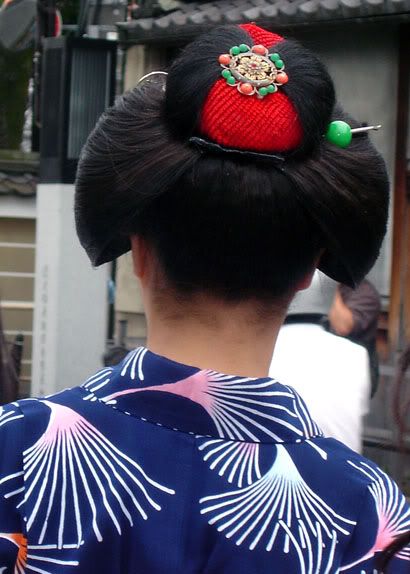
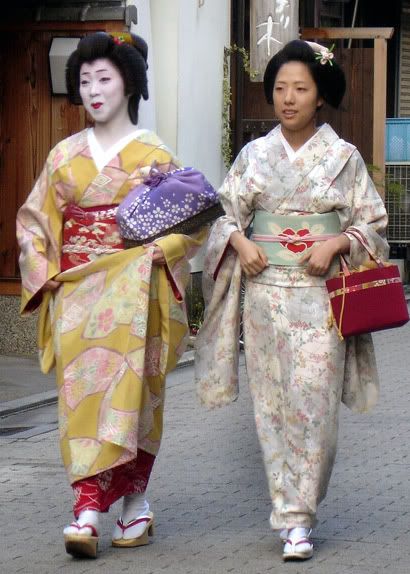
A Geiko of Gion, on her way to the Ichirikiya (Japan's most famous teahouse), talking to a high ranking maiko in casual kimono. Geiko wear an elaborate wig known as a katusra, while maiko have their own hair styled once a week.
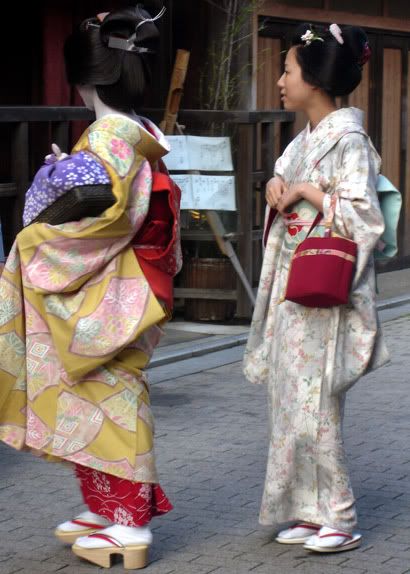

Pausing to chat with a patron of the Gion's expensive entertainment. Notice the elaborate top knot of the Geiko's wing, as well as her wooden clogs, which, unlike the okobo that maiko wear, are cut out in the center.
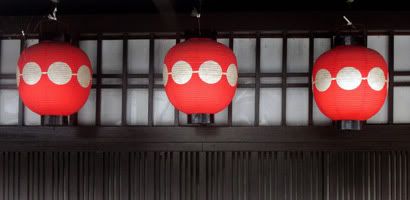
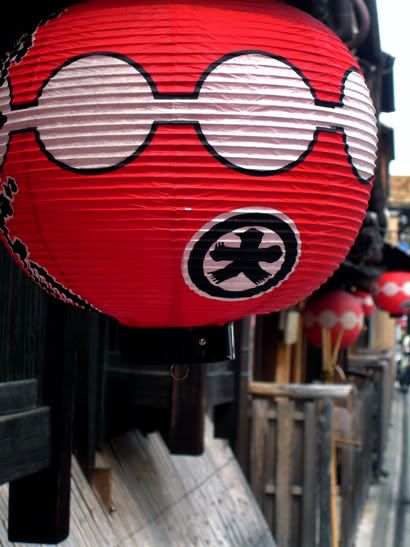
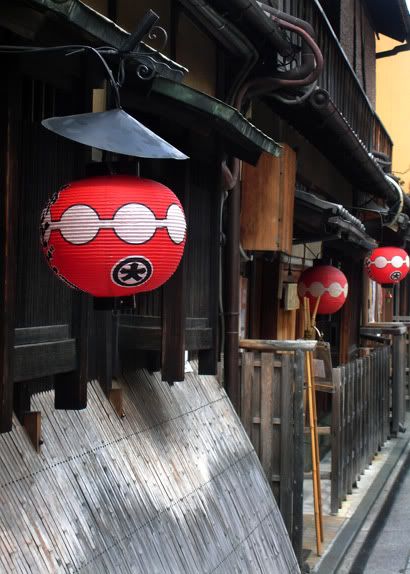
Kyoto's town houses have many distinctive features, such as red-ochre lattice windows, vertical-slit windows and spikes. One of the more peculiar is the inu-yarai that skirts many a house. Inu-yarai, or dog repellers, first appeared in the 17th-18th century. Their purpose was to protect houses from mud spattering up from the road, among other things (like dogs peeing on them)! They are usually made of bamboo or curved sticks, assembled in a frame that slopes out from the wall at an angle, a few feet above the ground, down toward the road. Scenes of slender strips of bamboo leading out in elegant curves from clean walls can be seen outside restaurants in Gion and on town houses in Nakagyo Ward.



0 comments:
Post a Comment